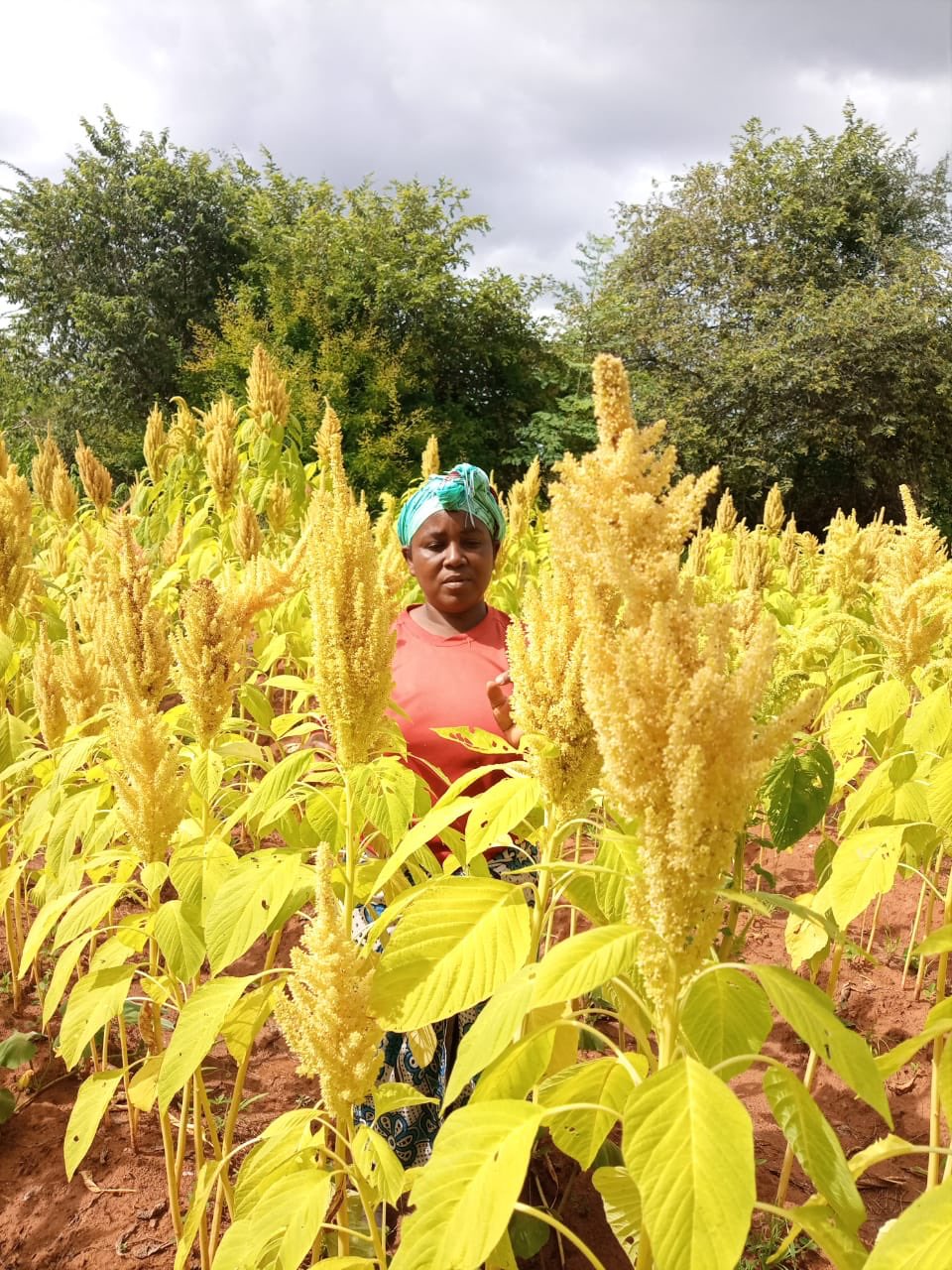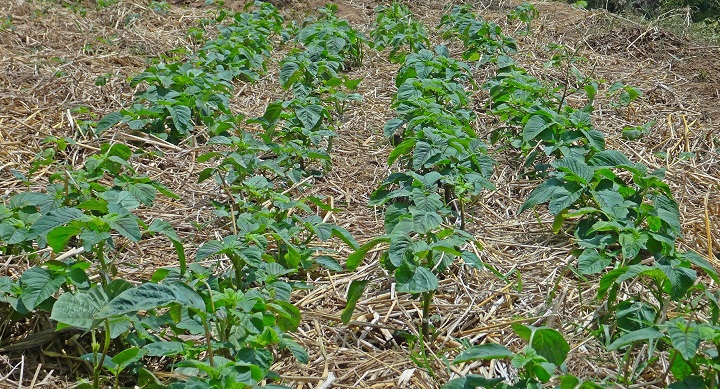Are you looking for the fastest maturing or highest yielding amaranth variety to grow in your farm? Amaranthus has 60-70 different species spread globally. These species range from grain, vegetable, ornamental and weedy types. In this post we will give you a list of the best amaranth varieties for grain and vegetables available in Kenya.
Amaranth (Amaranthus spp.) is popular a traditional vegetable alongside managu amd saget. It is known as Terere in Kikuyu and Mchicha in Swahili languages. Other common names of the vegetable plant are Lidodo (Luhya), Ododo (Luo), Kelichot (Kipsigis), W’oa (Kamba), Emboga (Kisii), Kichanya (Taita), Doodo (Luganda)
Why would you grow amaranth for food or commercial purposes? It is one of the most profitable as well as nutritious indigenous vegetable. The key benefits of terere are.
- It has multiple uses as a vegetable, nutrient rich grains and livestock feed.
- It is early maturing (75-90 days), tender leaves are ready for eating as an early vegetable in the season at three weeks after planting.
- Some types are relatively drought tolerant and gives you reasonable yields even under low soil fertility and rainfall conditions
| Amaranth Type | Species | Features |
| Vegetable | A. dubius A. tricolor A. blitum | Produce inflorescence along the stem. Their seeds are shiny, black and smaller in size compared to those of grain types. |
| Grain | A.hypochondrius A.creuntus. | They produce a loose panicle borne on the plant apex. They have pale colored seeds ranging from whitish cream, tan and golden to deep pink. |
| Ornamental | A.caudutus | grown for ornamental and dye extraction. Has showy inflorescence ranging in color from pale green to red, pink and purple. |
Best vegetable Amaranth varieties in Kenya

Amaranth leafy vegetables are high in vitamins A, K, B6, C, riboflavin and folate. Besides they are rich in essential minerals including calcium, iron, magnesium, phosphorus, potassium, zinc, copper, and manganese. The vegetables are very rich in iron and therefore good for anemic people.
Kenya has 4 common amaranth varieties grown for vegetables. They are the A. dubius, A. tricolor, A. blitum and A. hybridus & Amaranthus Tricolor
One of the most common terere vegetables at homes and markets. Its fast growing but more susceptible to drought than other types.
Amaranthius dubius
Best mchicha vegetable variety for commercial scale farmers.
This plant can grow to 150 cm tall. Stems: slender to stout, branched, glabrous or upwards. It has a maturity period of 3-4 weeks after sowing. The uprooted crop can yield 7.5-12.5 tons/acre
Amaranthus blitum
The plant is small, stunted and erect growing up to 100 cm tall.
The stems are simple, branched and glabrous. Its leaves are green or more or less purple The A. blitum has a Maturity Period of 4 weeks after sowing. It can Yield up to 5.0 tons/acre (uprooted crop)
Amaranthus hybridus
This type has erected, green or reddish-purple stems. The leaves grow from the stem alternating with the long stalks.
It can yield 12-24 tons/acre
Best Vegetable Amaranth (mchicha) seeds in Kenya
Kenya has a variety of vegetable amaranth seeds. The table below is a summary of best amaranth seeds you can grow that has been released in the last 5 years. It has their maturity periods, yield per acre and the ideal growing areas. In addition, a summary of the variety’s features is given for you.
To choose the best, look for one that does best in your farms’ agroecological zone.
| Amaranth seeds | Best Production Zones (m ASL) | Maturity Period (Days) | Vegetable leaves yield (t/ha) |
| KK Livokoyi | 250-2000 | 45 | 5 |
| KK Mrambi | 250-2000 | 45 | 6 |
| KAT Gold | 20-2400 | 80-100 | 1.8-2.5 |
| Terere Smart | 20-2400 | 75-90 | 1.3-1.5 |
KK Livokoyi
Livokoyi Mchicha Variety has a potential of giving you 5t/ha. It is suitable for you in UH, UM, LM, Lowland agroecological zones of Kenya.
It is best if you are looking for an early maturing terere with a long leaf harvesting period and high mineral content.
You can harvest the Livokoyi Mchicha type for 30 days from its maturity. This variety has following mineral composition
- 158 mg/100 g of Ca,
- 92 mg/100 g of Mg
- 0.5 mg/100 of Zn.
KK Mrambi
KK Mrambi terere type has the highest yield potential in Kenya of 6 t/ha. You can grow it if your farm is in UH, UM, LM or Lowland agroecological zones of Kenya.
You will enjoy harvesting its leaves in 45 days since transplant and continue for 45 days. Its mineral content is as follows.
- Ca mg/100 g = 462
- Mg mg/100 g = 238
- Zn mg/100 g = 0.4
KAT Gold
KAT Gold is a multipurpose terere variety good for both grains and vegetables. It thrives well in areas with 22-35 °C. Suitable for a wide range of agro ecological zones including high altitude areas, medium altitudes and lowlands.
Other features for this KAT Gold amaranth are.
- Drought tolerant and can give you reasonable yields even in low rainfall as low as 200mm
- Highly nutritious, contains high quality proteins (20%), rich in amino acid, lysine., calcium, iron, phosphorous and vitamins A, D and B complex. Besides it has high quality oils (10.4%).
- Highly digestible and a good Immune booster particularly for the malnourished and those with low immunity
- It Sprouts easily making it good source of leafy vegetables.
Terere Smart
Terere Smart is a Dual purpose (grain and vegetables) amaranth variety. It is Early maturing (75-90 days) and relatively drought tolerant (gives reasonable yields even when the rainfall is as low as 200mm.
Its leaves are highly nutritious, contains high quality proteins (18.5%) and especially rich in amino acid lysine. Contains calcium, iron, phosphorous and vitamins A, D and B complex. Has high quality oils (9%)
Best grain amaranth varieties in Kenya

Grain amaranth is highly nutritious. The whole grains are boiled, roasted or popped or eaten as sprouts. The grain may be milled into flour, blended with wheat flour to enable it to rise and used in the baking and confectionery industry.
This magical cereal contains protein (16-20%), oil (5-10%), phosphorus, calcium, zinc, vitamins B, C and E and dietary fibre. It has two times the amount of calcium found in milk. The cooked grain is recommended for the elderly and people who have been through a long fast or starvation.
In addition, cooked amaranth grain is up to 90% digestible making it an excellent weaning diet. Finally, being an immune booster, it is good for people with compromised immunity, the elderly and those that are severely malnourished.
Kenya has 3 grain types include A. hypochondrius and A. creuntus. Other hybrid types like A hybridus are multipurpose and good for both grain and vegetables.
Best Grain amaranth seeds in Kenya
There are several grain amaranths seed varieties oe seed commonly grown in Kenya. They include Katumani amaranth (KAM) 114, Katumani amaranth (KAM) 001 and Katumani amaranth (KAM) 201
Katumani amaranth (KAM) 114
It has very small seeded (1000 seeds weigh about 0.6-1.2 grams). The seeds are golden in colour. Yield potential in the ASALs is 550 kg grain and 400 kg leaves per acre
Katumani amaranth (KAM) 001
It is very small, seeded type (1000 seeds weigh about 0.6-1.2 grams). The seeds are creamish white and lenticular in shape The seed’s Yield potential in the ASALs is 500 kg grain of grain and 300 kg leaves per acre
Katumani amaranth (KAM) 201
As KAM 114 but the seeds are reddish brown in color. Yield potential in the ASALs is 550 kg grain and 400 kg leaves per hectare
